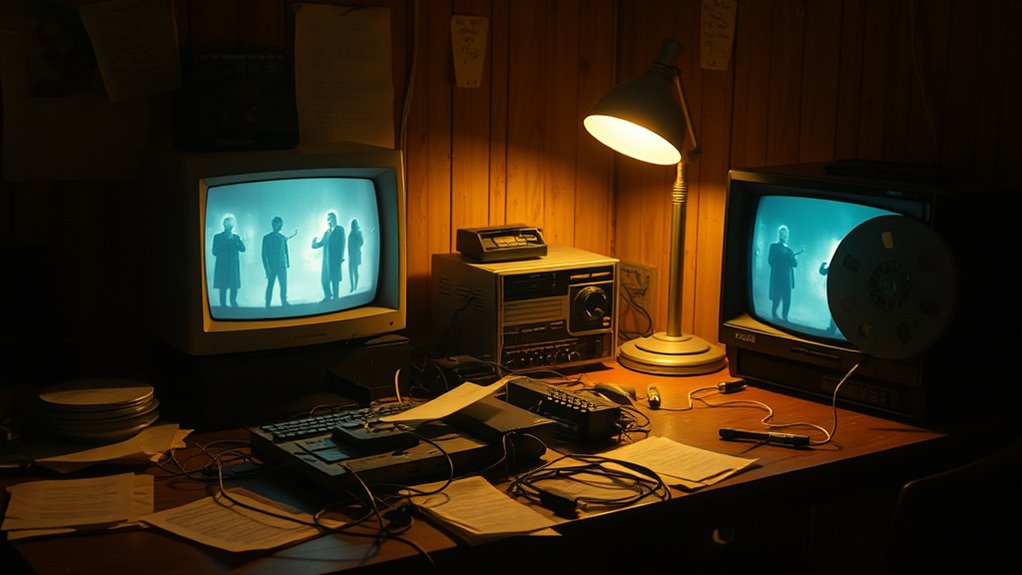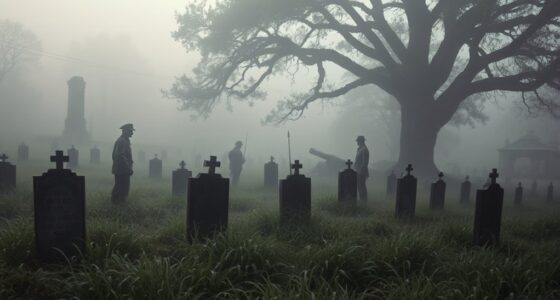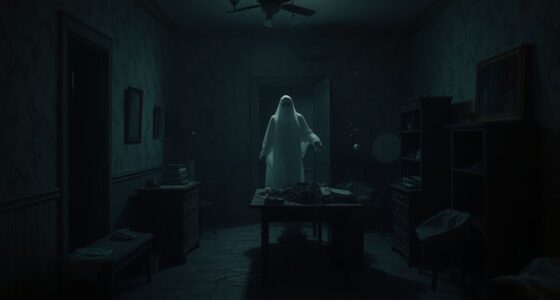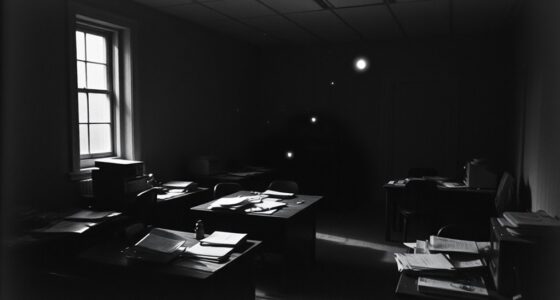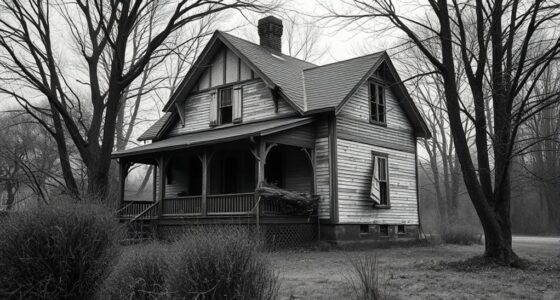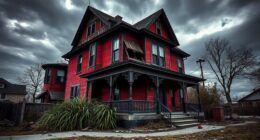The Philip Experiment of 1972 was a groundbreaking attempt to explore if collective belief and mental effort could conjure a spirit-like entity. Researchers created a fictional character named Philip, focusing mental energy and belief to see if they could produce paranormal responses. This experiment challenged traditional views of spirits as independent beings, suggesting they might be constructs of human consciousness. Continuing further, you’ll uncover more about how this experiment reshaped thoughts on paranormal phenomena.
Key Takeaways
- The Philip Experiment was a 1972 Canadian psychic research project aiming to create a fictional spirit through collective mental effort.
- It was inspired by 1970s interest in paranormal phenomena, séance techniques, and mind-power experiments.
- The experiment involved detailed character development of “Philip” to test if collective belief could manifest a spirit.
- Results suggested spirits might be human constructs of collective consciousness rather than independent entities.
- Key sources include reports from the Toronto Society for Psychical Research and analyses of psychic research history.

The Philip Experiment, conducted in 1972, was a pioneering attempt to demonstrate that a group could conjure a fictional spirit through focused mental effort and collective belief. This experiment emerged from a desire to explore the boundaries of psychic research and see if the mind’s power could create tangible paranormal phenomena. You might find it fascinating because it challenges the notion that spirits or ghosts are solely independent entities; instead, it suggests they could be constructs of collective consciousness and mental focus. The researchers involved aimed to test whether a group could produce paranormal methods that would influence physical environments or generate responses consistent with spirit communication.
To understand the context, you should know that during this period, the 1970s, interest in paranormal phenomena was surging. Many scientists and enthusiasts were experimenting with psychic research, trying to uncover the underlying mechanisms behind telepathy, psychokinesis, and spirit communication. The Philip Experiment was part of this broader movement, seeking to determine if spirits could be created through mental focus rather than being independent supernatural beings. The researchers designed a fictional character named Philip, inventing detailed backstories and characteristics to make him as real as possible within the collective consciousness. They believed that if enough mental energy and belief were directed toward this construct, it might produce observable effects.
In the 1970s, interest in psychic research surged, exploring spirits as mental constructs rather than independent entities.
This experiment also drew inspiration from earlier studies involving séance rooms, automatic writing, and remote viewing—methods that aimed to tap into psychic abilities and paranormal methods. The researchers used these techniques as a foundation, believing that mental focus and group consensus could influence physical surroundings or produce responses that seemed to originate from beyond the physical dimension. Their goal was to see if the spirit they created would respond to questions and exhibit behaviors similar to those claimed in genuine paranormal encounters. Additionally, the use of sound vibrations and focused mental effort was thought to enhance the likelihood of manifesting such phenomena.
The experiment’s design was meticulous, emphasizing the importance of collective belief and mental effort. You might see it as a test of the power of the mind and collective intention, echoing ideas found in various psychic research projects. If the fictional spirit of Philip appeared through the collective mental effort, it would suggest that spirits might not be independent entities but rather manifestations created by human consciousness. The results of the experiment sparked debates about the nature of spirits, consciousness, and the potential for psychic research to uncover new aspects of reality. Overall, it remains a compelling example of how paranormal methods can be employed to probe the mysteries of the unseen world.
Frequently Asked Questions
What Was the Public Reaction to the Philip Experiment?
You’d find that the public reaction to the Philip Experiment was mixed, with some people intrigued while others remained skeptical. Media coverage fueled debates, emphasizing the experiment’s mysterious nature and questioning its validity. Many skeptics dismissed it as a trick or psychological illusion, while believers saw it as evidence of paranormal activity. Overall, the experiment sparked curiosity but also heightened public skepticism about spiritual and psychic claims.
Did the Experiment Influence Modern Paranormal Research Methods?
You might be surprised to learn that the Philip Experiment notably influenced modern paranormal research methods. It showed how experimental methodology could be applied to psychic research, encouraging researchers to design controlled studies rather than rely solely on anecdotal evidence. This coincidence sparked new approaches in investigating paranormal phenomena, emphasizing scientific rigor and repeatability, which continue to shape contemporary investigations into the supernatural.
Were There Any Similar Experiments Conducted Before 1972?
Yes, there were historical precedents and prior attempts at similar experiments before 1972. You can find early efforts in spiritualist circles and séances, where practitioners aimed to communicate with spirits through mediums. Additionally, researchers like William Crookes and others conducted experiments exploring psychical phenomena. These efforts laid the groundwork for later, more structured experiments like the Philip Experiment, showing a lineage of interest in understanding paranormal phenomena through systematic investigation.
How Did the Experiment’s Outcomes Impact Skepticism About Spirits?
The Philip Experiment reduced skepticism about spirits by demonstrating how psychological factors could create paranormal credibility. When the experiment seemed to produce spirit-like responses, skeptics questioned whether these outcomes were genuine or placebo effects. As a result, it highlighted the importance of scientific scrutiny, making people more cautious about accepting paranormal claims without solid evidence, ultimately fostering skepticism reduction and encouraging critical thinking about spirits and the supernatural.
What Are the Long-Term Effects of the Philip Experiment?
You might find that the long-term effects of the Philip Experiment challenge scientific skepticism by highlighting psychological implications in paranormal research. Coincidentally, it prompts you to question how belief and suggestion influence outcomes. Over time, it encourages a more nuanced view of experiments, emphasizing the mind’s power. This fosters critical thinking, reminding you that exploring psychological factors is essential before drawing definitive conclusions about spirits or the supernatural.
Conclusion
As you reflect on the Philip Experiment, you realize it’s like summoning shadows from the depths of imagination, blurring the line between reality and illusion. It’s a haunting dance of belief and skepticism, where the boundaries of the mind ignite unseen fires. This experiment invites you to wonder: are spirits whispers from another world or echoes of your own mind’s dark corners? In this mystery, you’re left to navigate the fog between fact and fiction.
